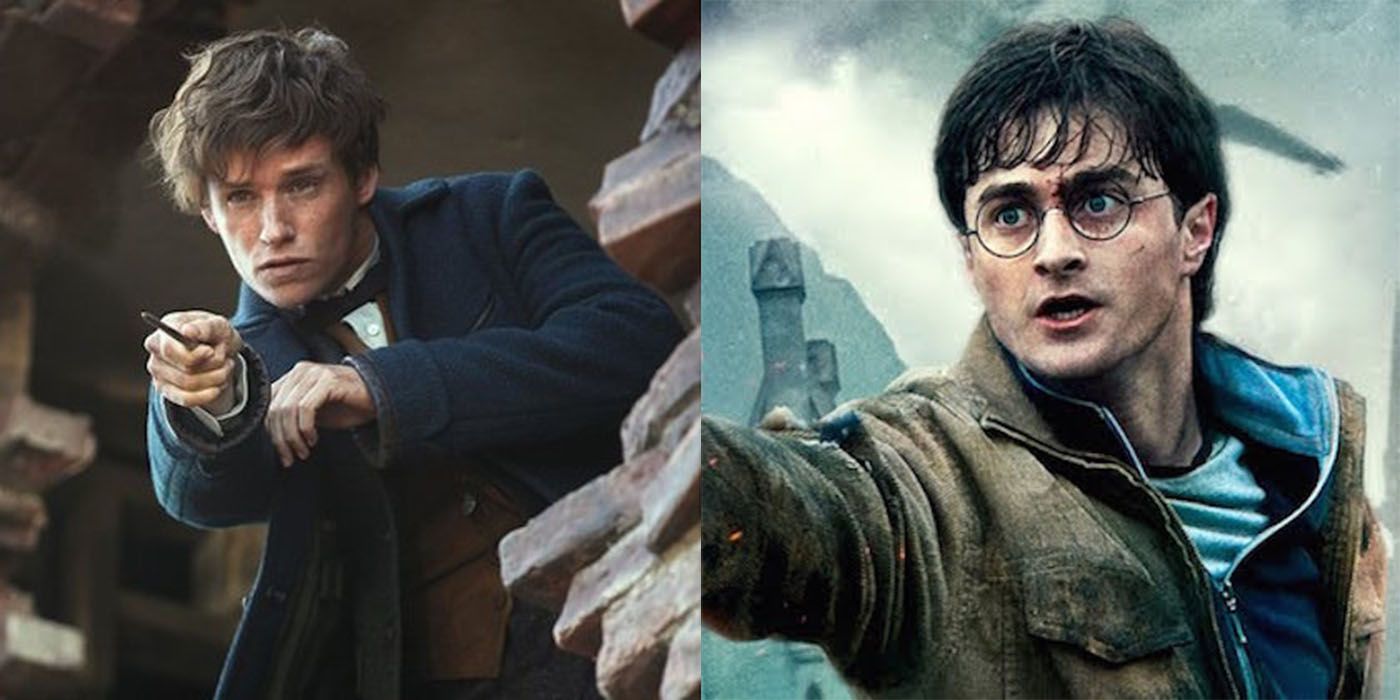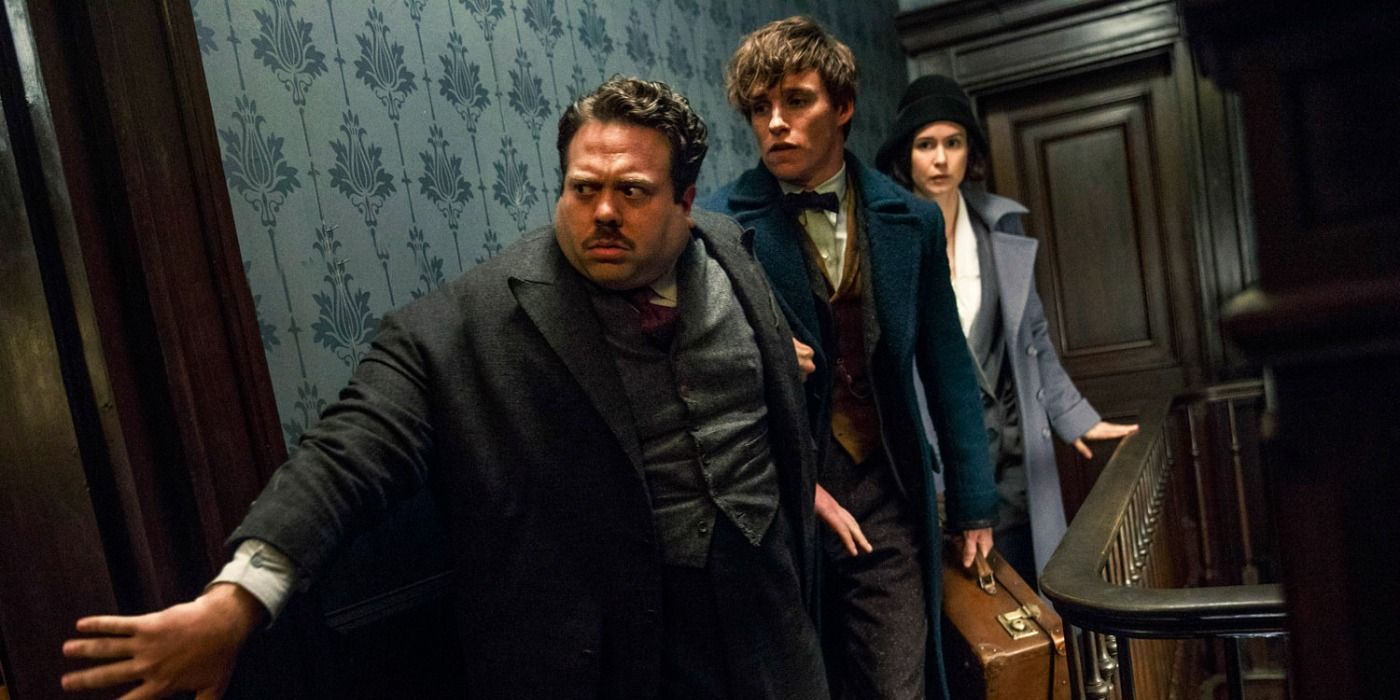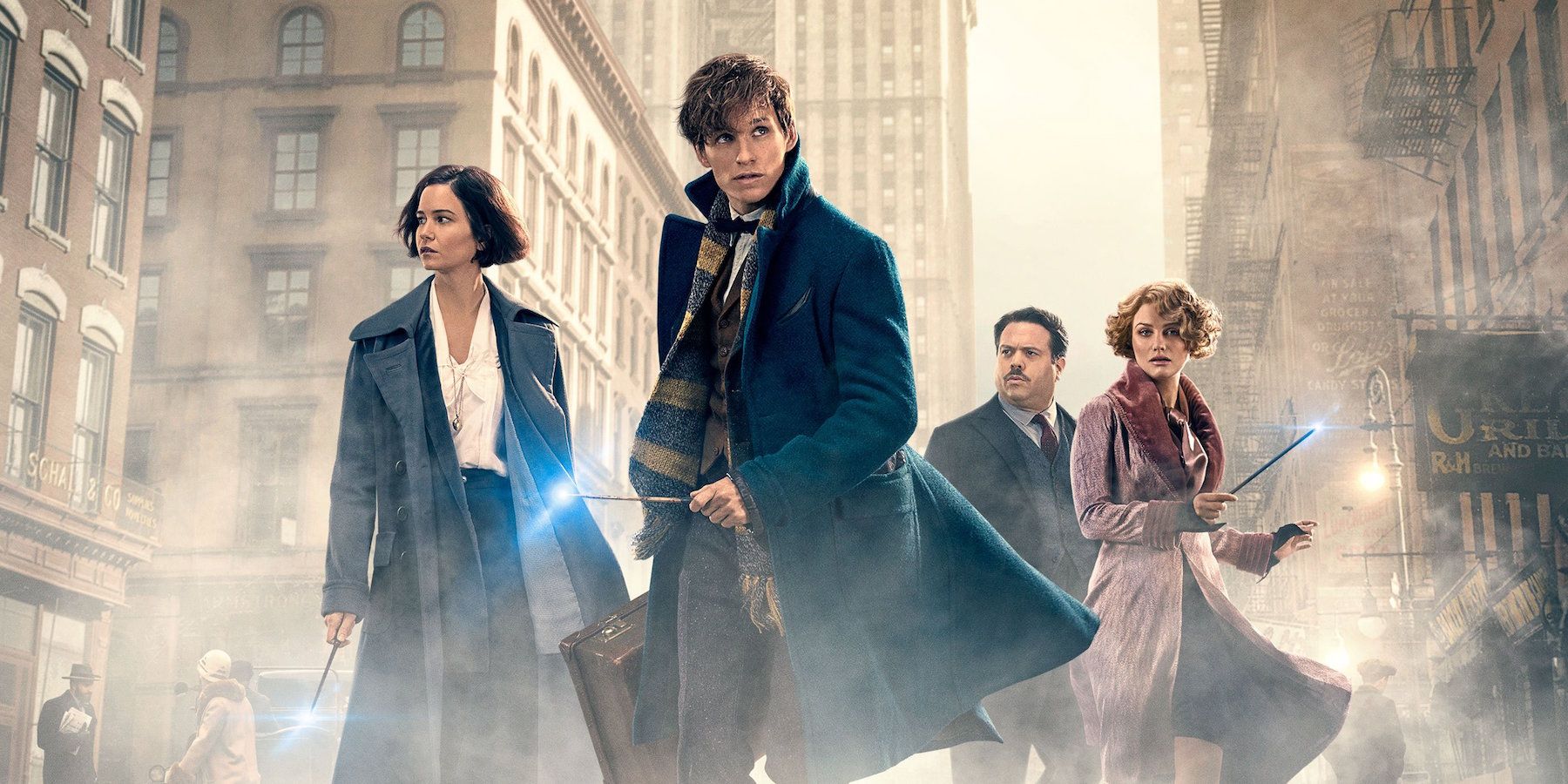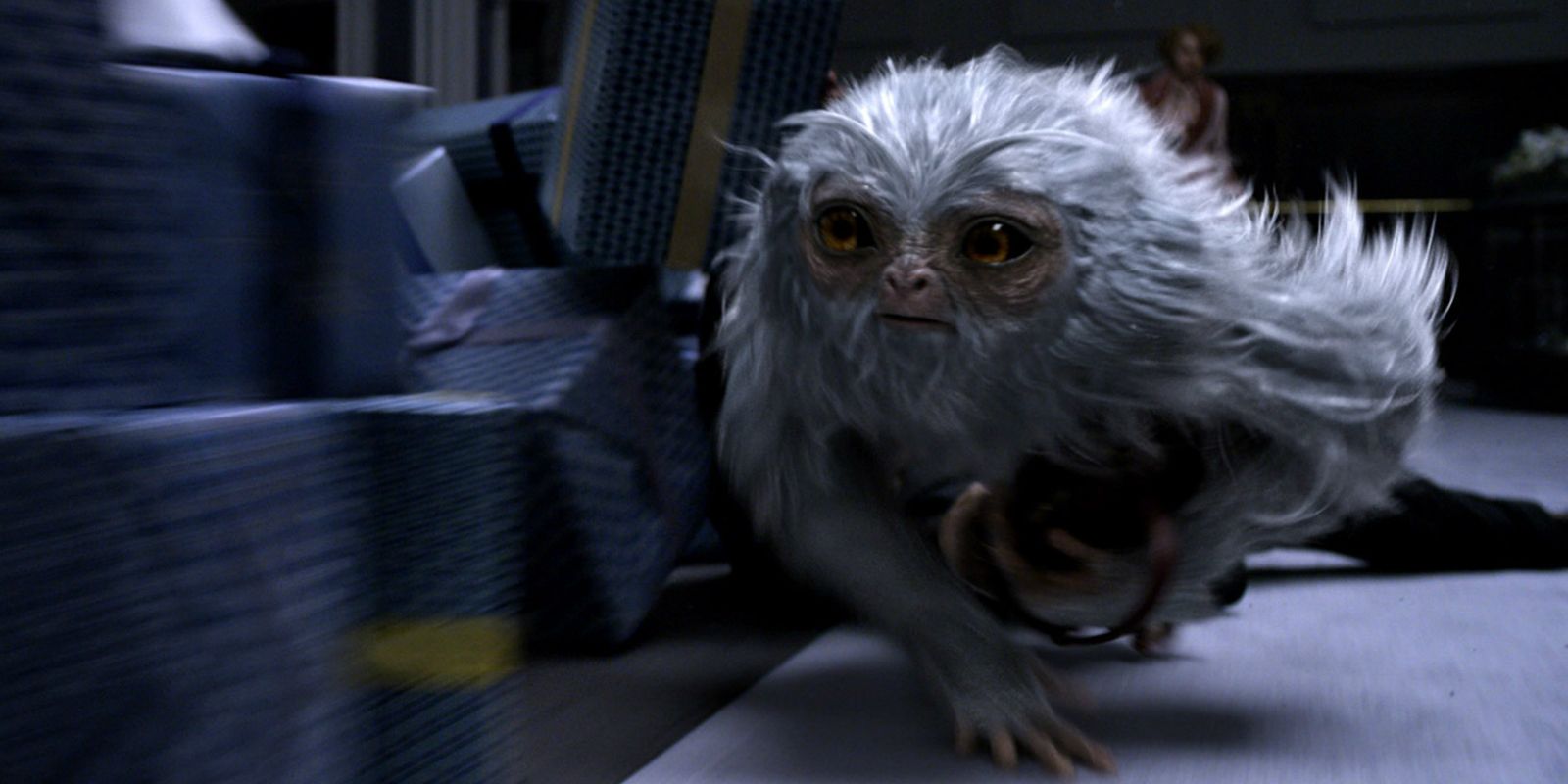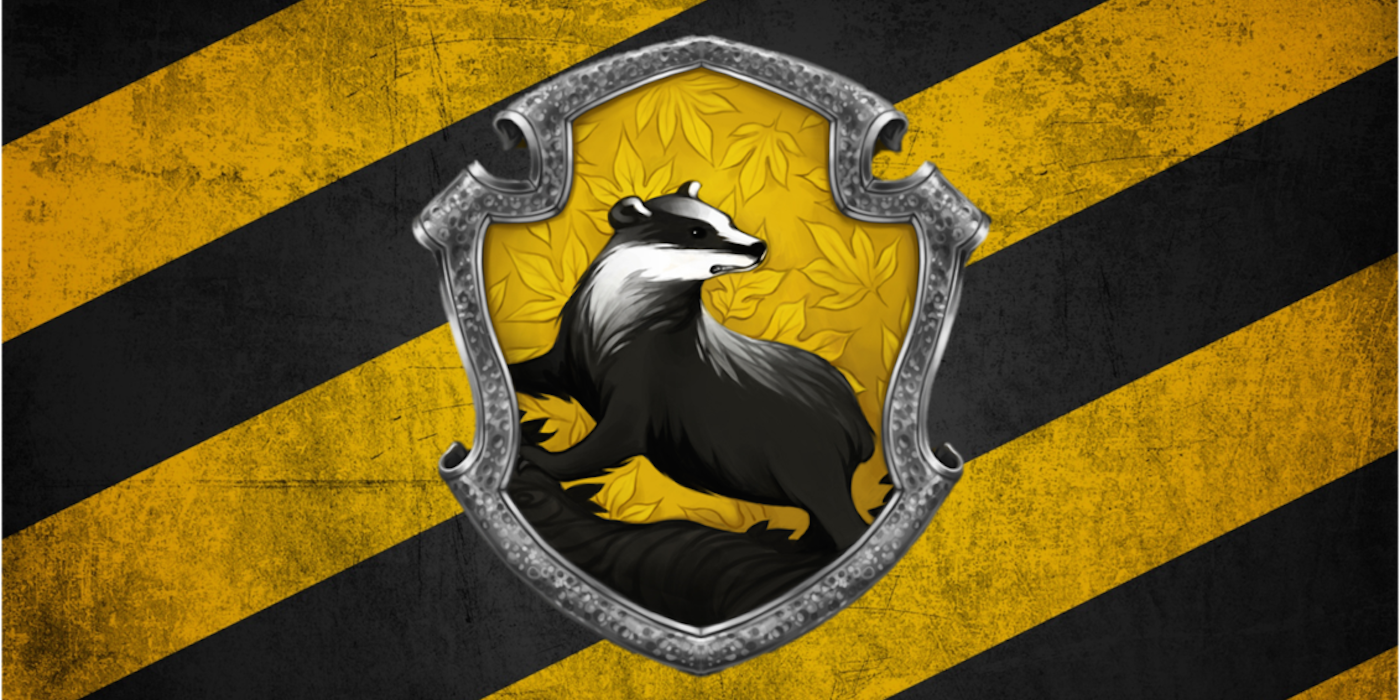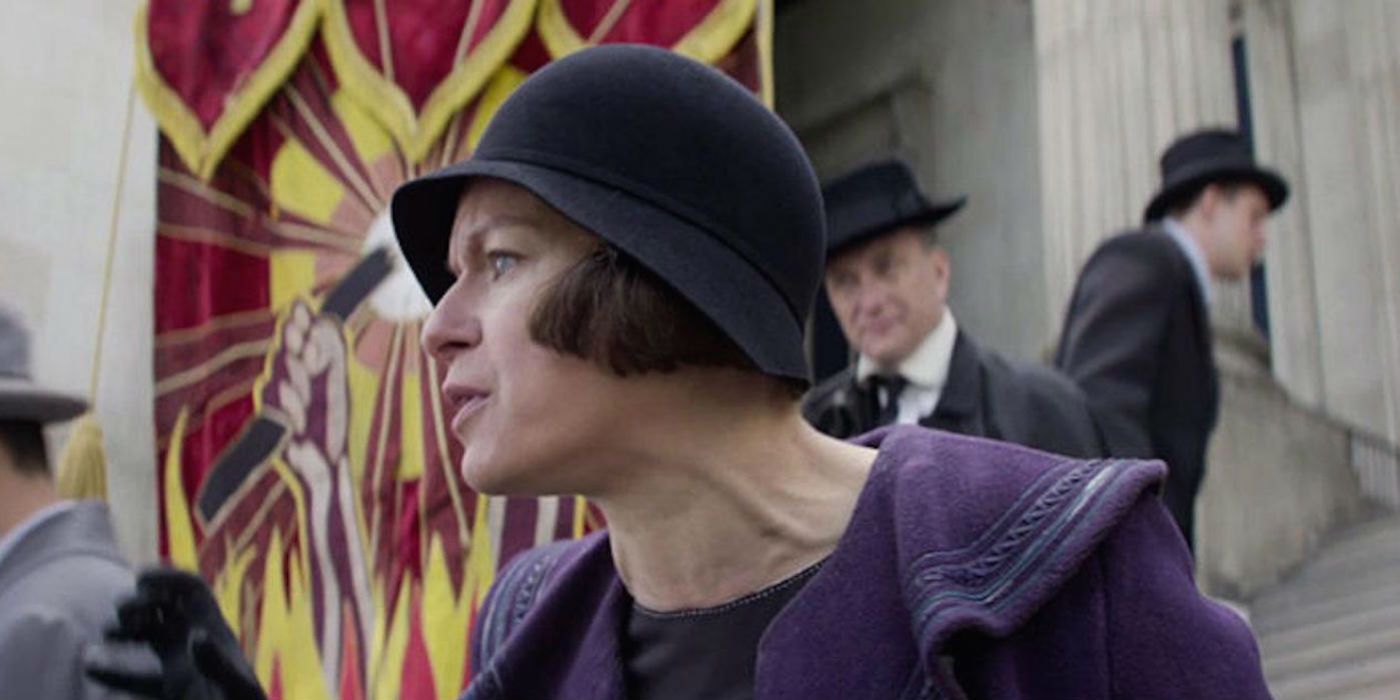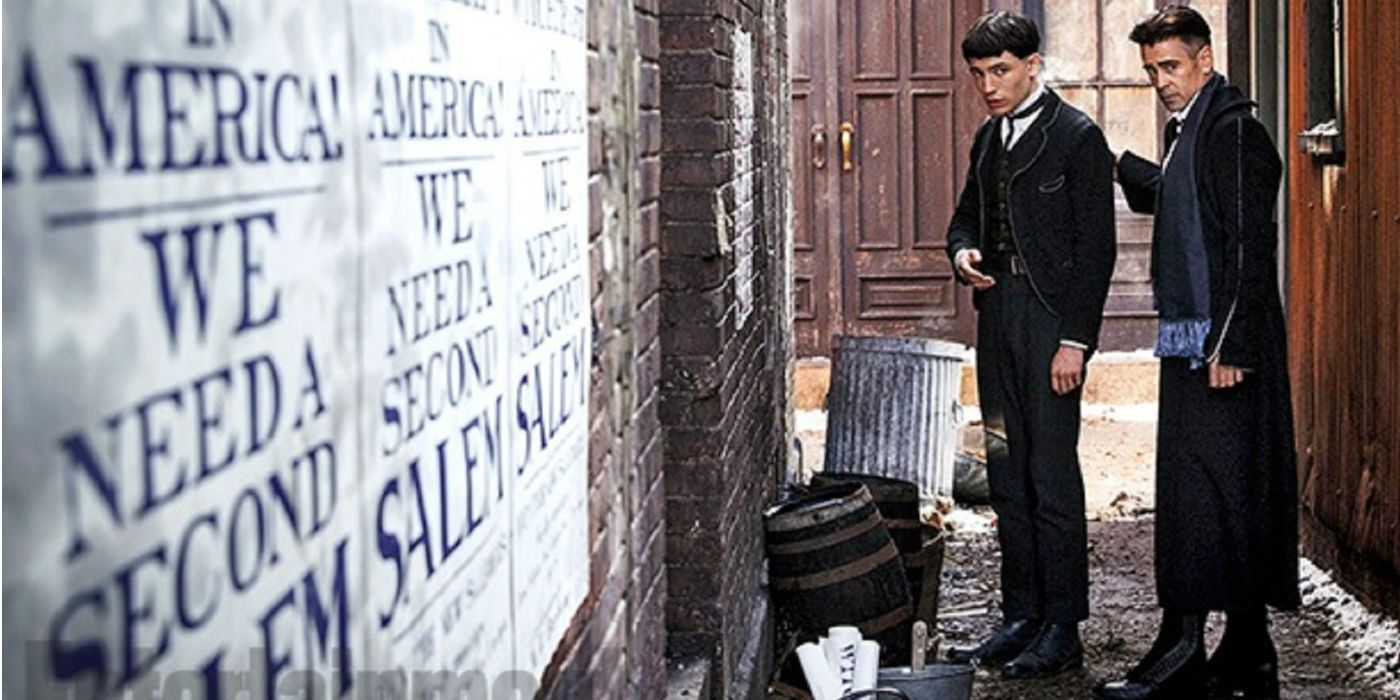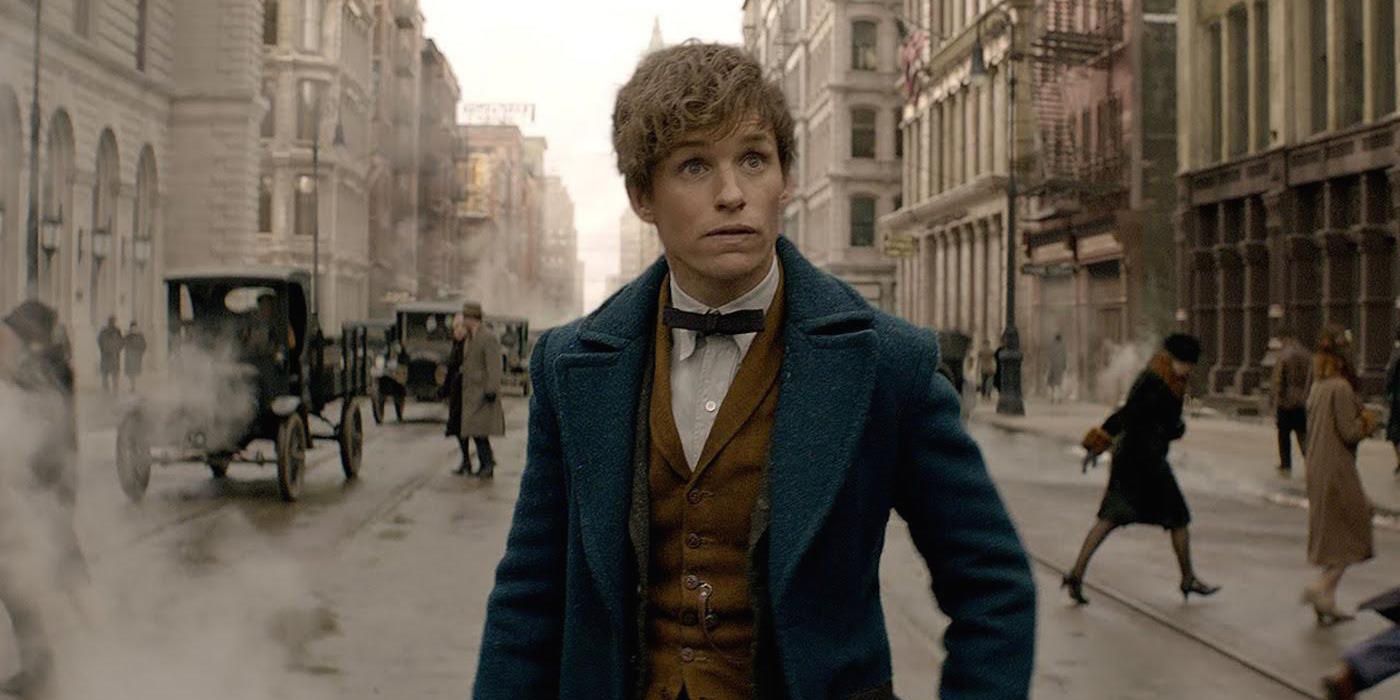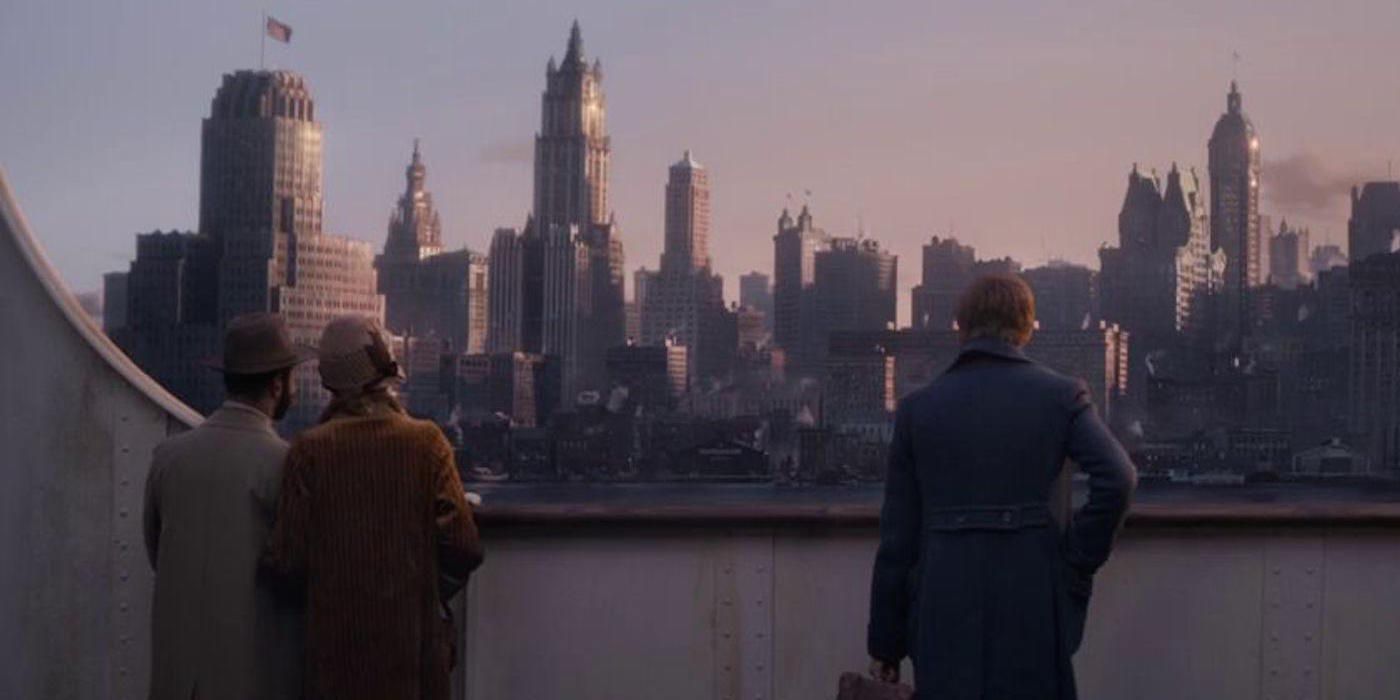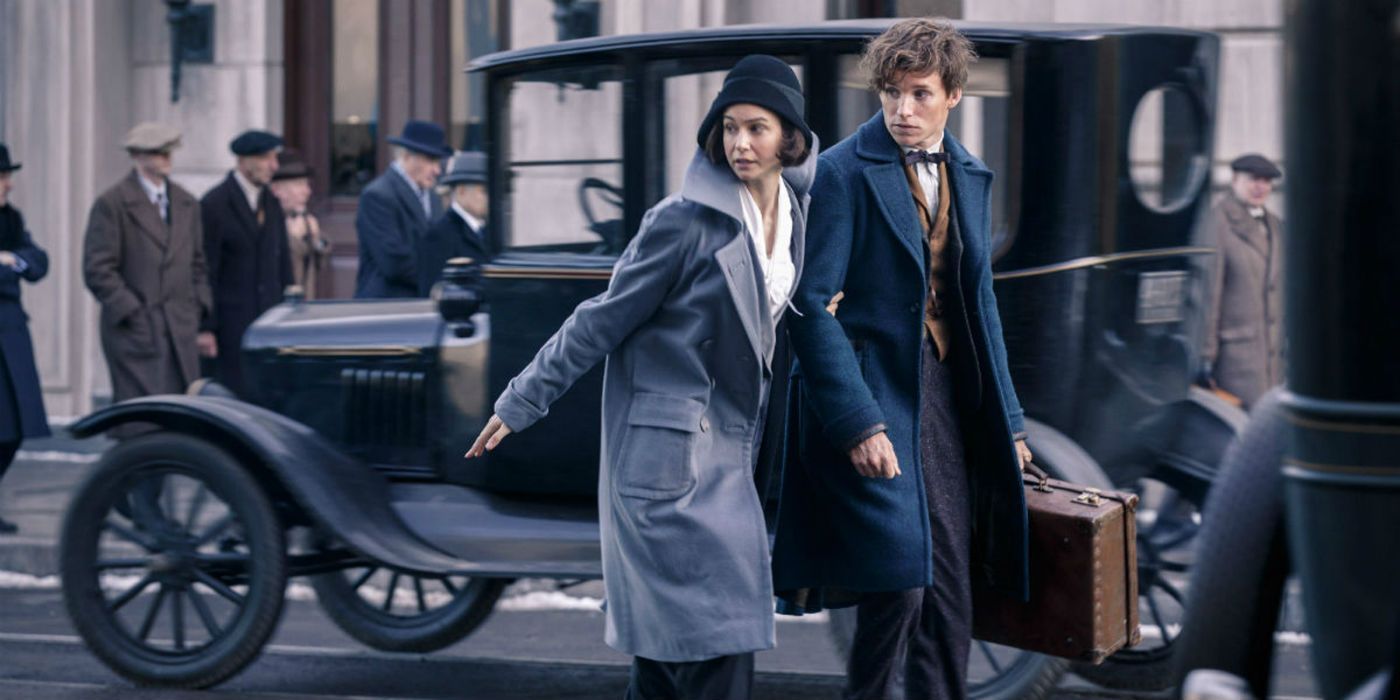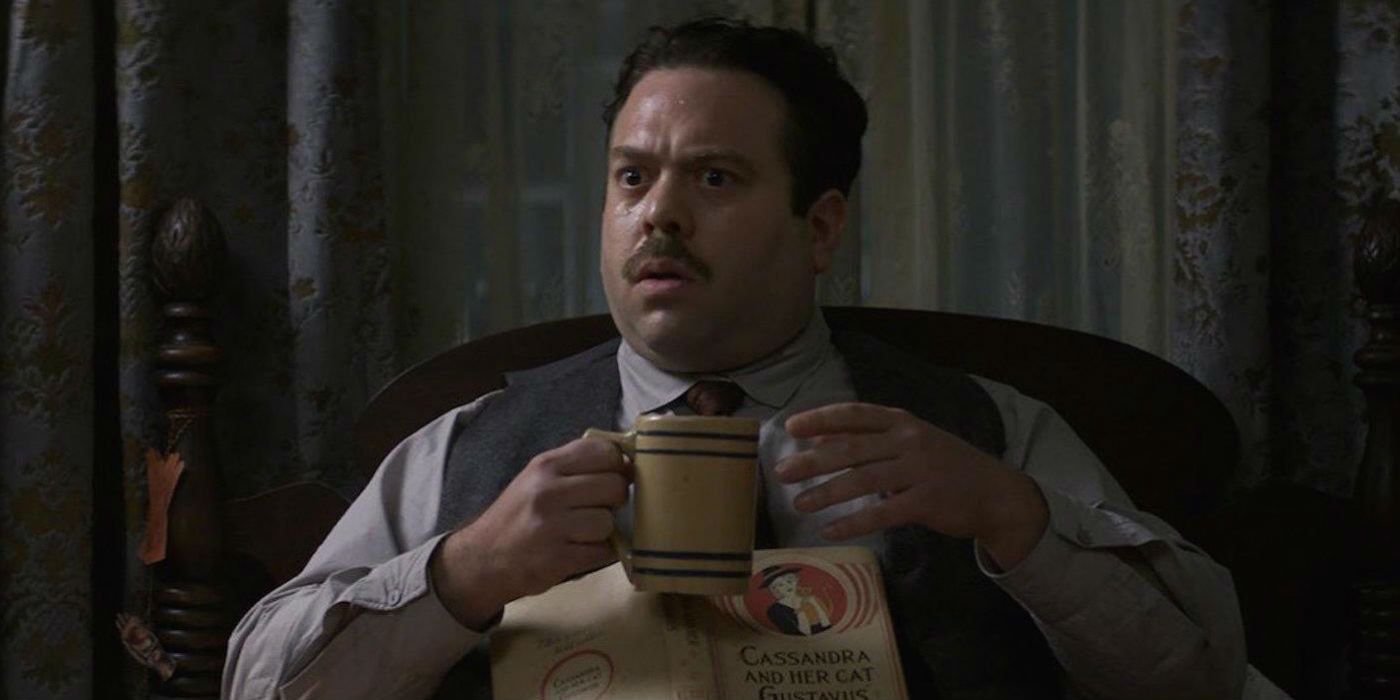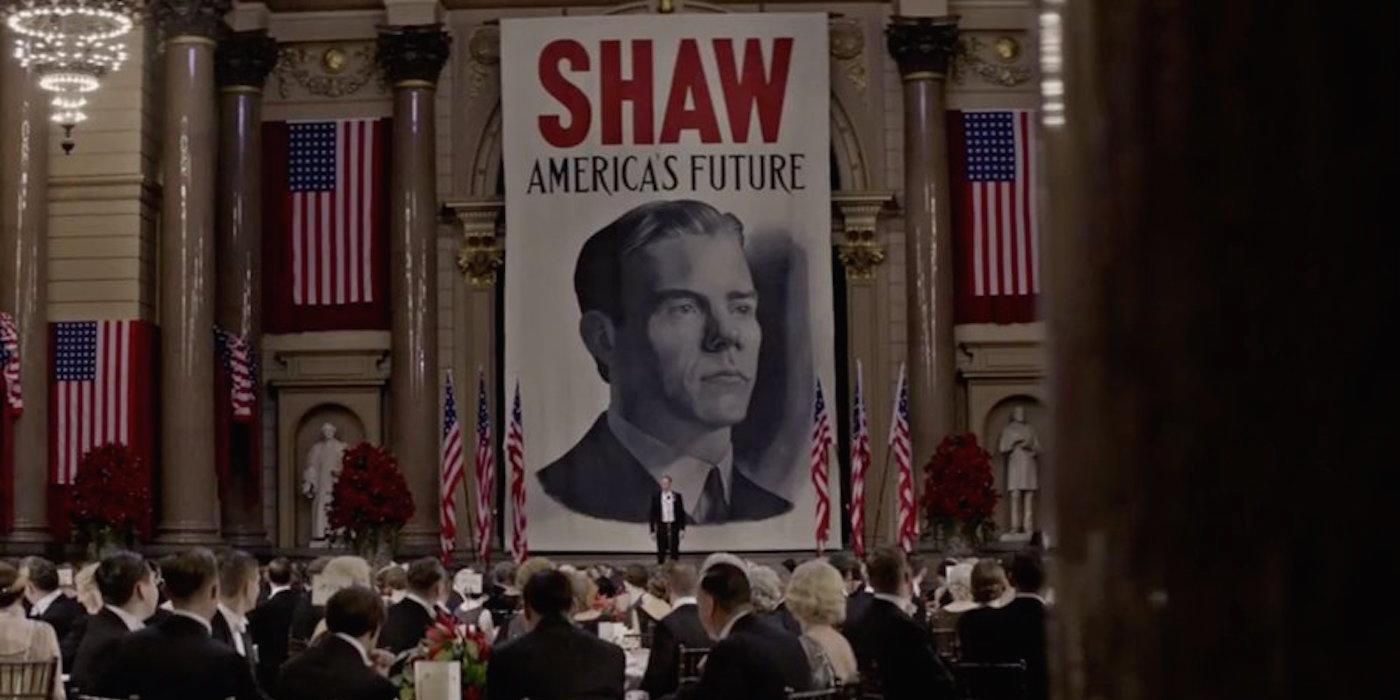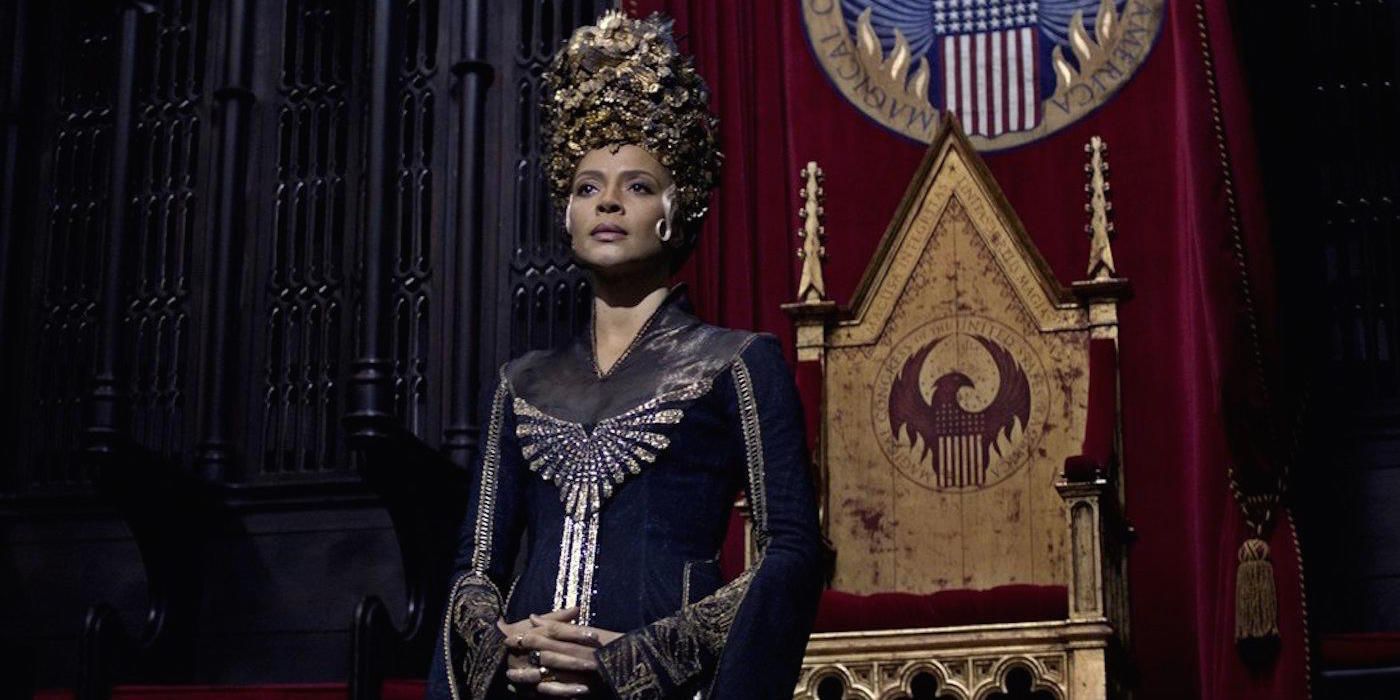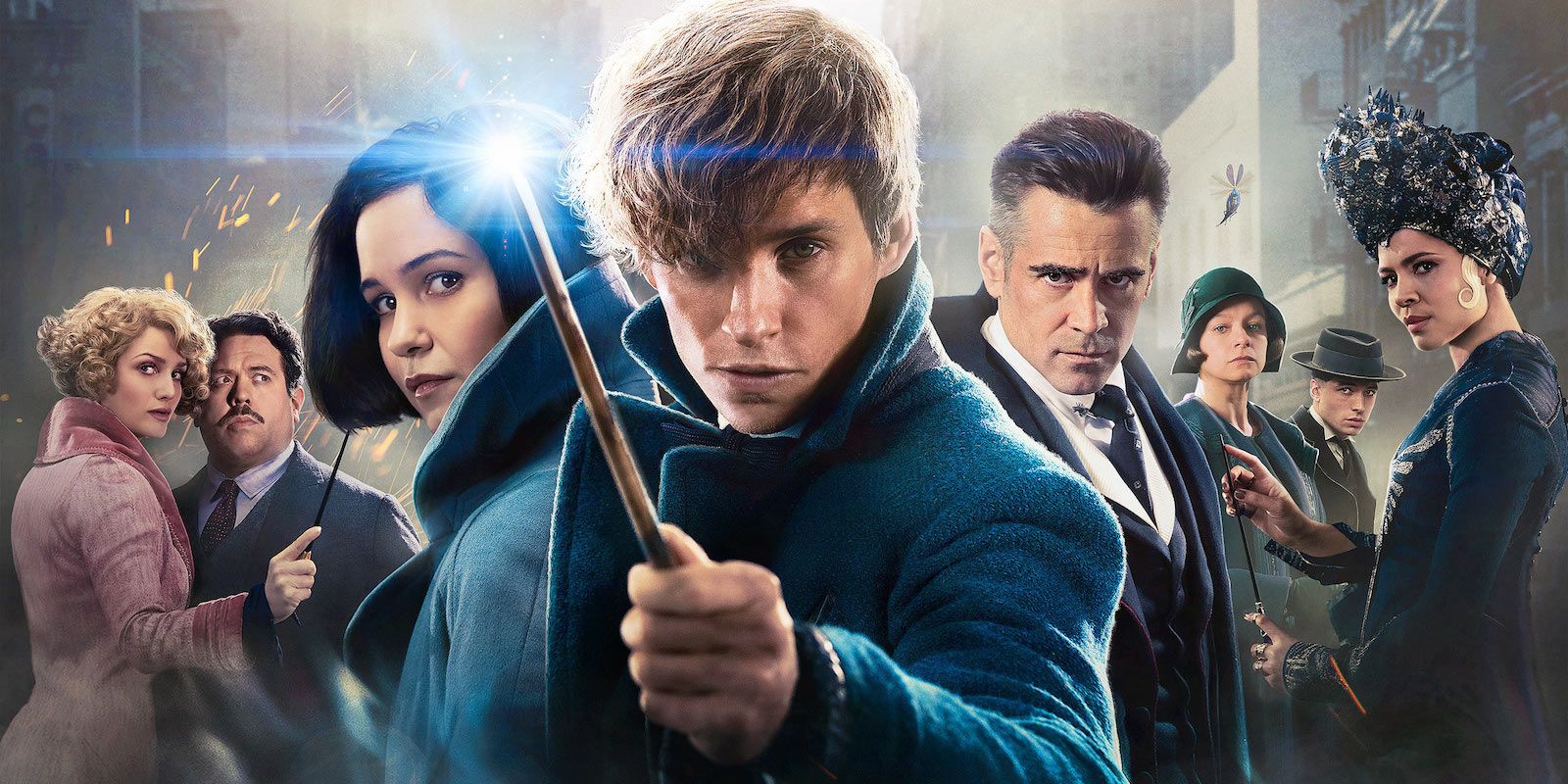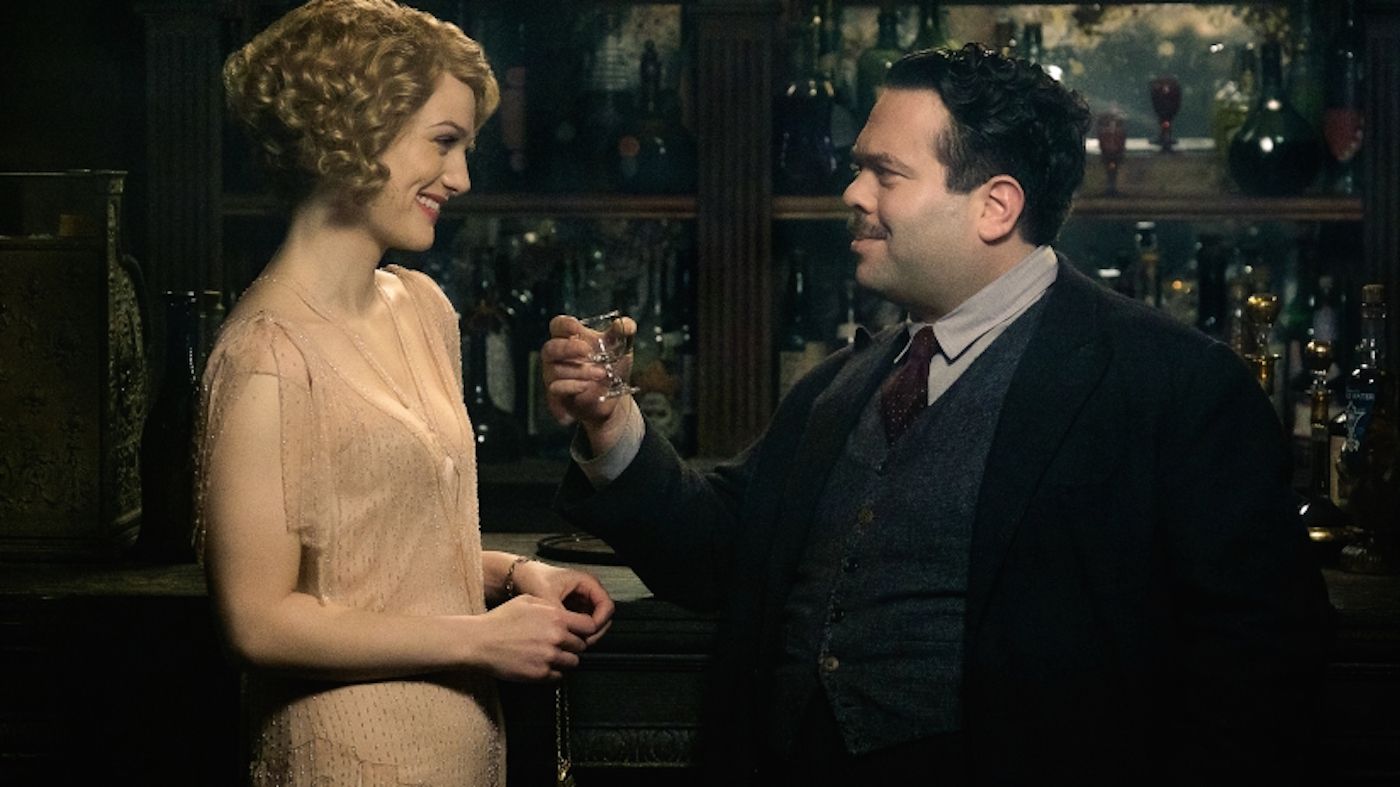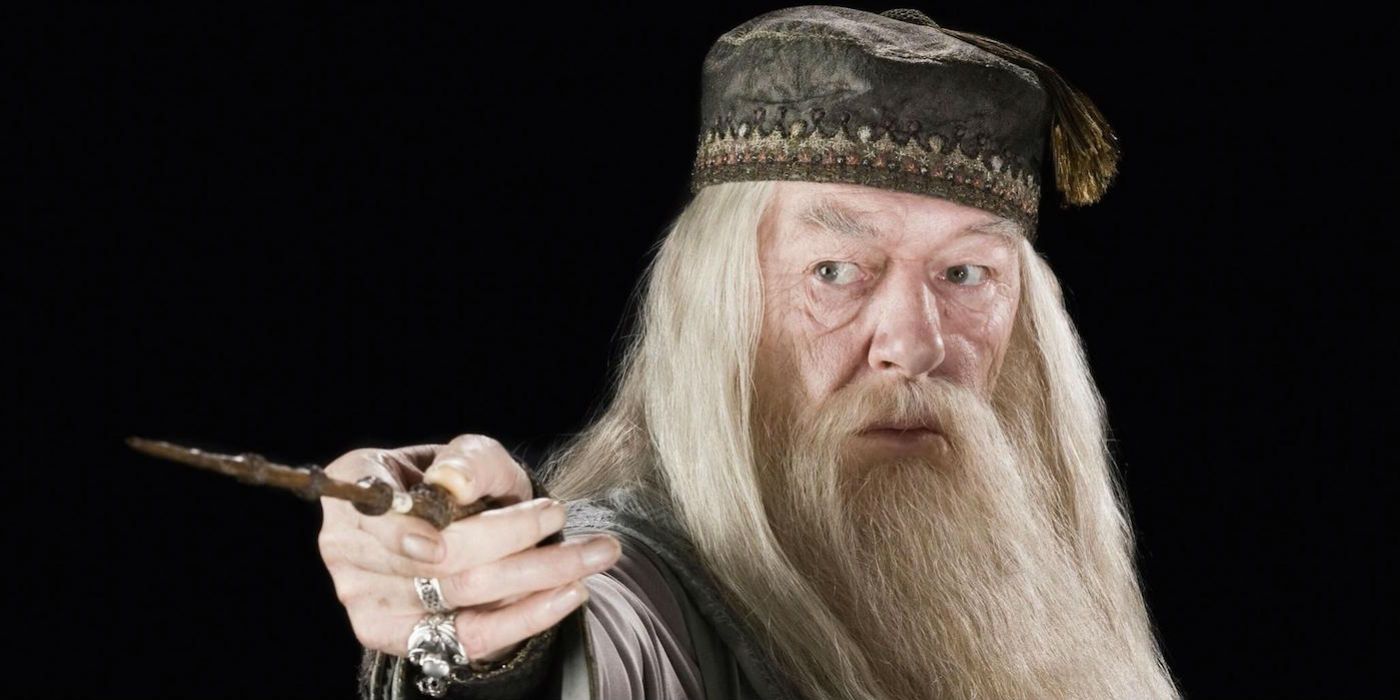While critics have been, deservedly, focused on whether or not Fantastic Beasts and Where to Find Them is actually any good, very few have honed in on the significant differences between Rowling's new series and its earlier counterpart.
The new epic, the first installment of a five-film series, features Eddie Redmayne as the wizard and author Newt Scamander. Serious Potter fans may remember Scamander from Hogwart's curriculum. He wrote a textbook on magical beasts with the same title as the film.
While there is some connective tissue between the Harry Potter films and this new outing-- Dumbledore is mentioned in passing and will reportedly become an active member of the cast in future films, for instance-- they are distinct and separate, ahem, beasts.
Just how separate? We decided to take the time to draft up this list of the 15 biggest ways that Fantastic Beasts and Where to Find Them is different from the 8 films that preceded it.
Please note: This list will contain spoilers for all 9 films set in J.K. Rowling's magical universe, and spoilers from the books when relevant.
15. Muggle/No-Maj main character
The Harry Potter films have never had a non-wizard as a main character before. The closest we've gotten was, what, one of Hermione's parents? Harry's befuddled aunt and uncle? The film defiantly breaks from this tradition with the inclusion of Jacob Kowalski, a regular guy with no wizarding ability who gets dragged into the adventures after accidentally encountering Newt Scamander and one of his titular beasts.
Even better? Kowalski, played brilliantly by Dan Fogler, also slides effortlessly into the "everyman" role that Ron Weasley occupied in the Potter books and films. He's just a guy who wants to own a bakery, but still possesses the bravery and strength of heart to face off against dark wizards when the occasion calls for it.
Having a muggle (or no-maj!) hero is really a big step forward for this franchise, going a long way to prove that the world isn't separated between "magical supermen" and "mundane idiots." There are many shades of gray in Rowling's world. It makes sense especially given the film's audience which, at last count, consists of about 100 percent Muggles.
14. Mixed POV
In the original films, there was no question who the hero was. It was The Boy Who Lived. It was Harry Potter. Nearly every scene, and chapter, worked to reinforce that. It was Potter's story and he was our bridge into the universe. It was him the films focused on and it was his journey that concluded the films.
That doesn't seem to be the case here, however. While ostensibly the film's main character, Newt Scamander is not really the audience's point-of-view character. He is aloof, mysterious and, most importantly, may not even play a huge role in future films in the new series, according to reports.
That leaves us with several point of view characters. As stated above, Jacob is the everyman, and acts as our audience surrogate, marveling at the world around him and commenting on it. Porpentina Goldstein, portrayed by Katherine Waterston, is a put-upon average wizard, giving us insight into the often banal and unfair inner workings of adult wizarding life. This is a theme Rowling often touched upon in the original films, with characters such as Dolores Umbridge and Arthur Weasley. There's also Newt, who gives the audience the film's quest: gathering up those beasts and, eventually, forcing a confrontation with Percival Graves.
13. All of those fantastic beasts
We would be remiss if we didn't mention the actual beasts, which form the spine of the film's narrative and take up prominent space in the title. Yep. This movie is packed to the gills with all manner of beasts. Hagrid would be pleased, as his love for creatures knows no bounds.
From the gold-loving Niffler to the huge and majestic Thunderbird, each beast occupies a set-piece, of sorts, in the film. This operates in direct contrast to the Harry Potter series, where beasts were only ever shown as tangentially important to the proceeding (aside from giving us some much-needed Hagrid back story in the earlier installments).
As a matter of fact, one of the film's major antagonists is a beast, an Obscurus. This malevolent creature is created when a wizard forcibly represses their powers. Newt even has one trapped in his magical suitcase, from a previous adventure.
12. Hufflepuff rising
If there is one thing that sticks out about the Harry Potter franchise, it is the obvious importance of some wizarding houses and the obvious unimportance of others. It pretty much boils down to Gryffindor, which is good, Slytherin, which is mostly bad, and, uh, those other two.
Now, thanks to this film, one of those other two overlooked houses is finally getting a chance to shine: Hufflepuff.
As noted in the script, Newt Scamander is a proud member of Hufflepuff, and shows off many of the house's signature traits. He is hard-working, modest and decidedly loyal, as his friendship with Jacob proves. Hufflepuff is also based in the element of earth, which aligns nicely with Scamander's love of animal life and his dedication to protect beasts of all stripe.
It must also be noted that Hufflepuff has produced the least amount of dark wizards, in comparison with the three other houses.
Now, when is house Ravenclaw going to get a chance to shine?
11. non-magical villain
Not only does the film feature the franchise's first non-magical hero, it also shows off the franchise's first no-maj villain, in the form of Samantha Morton's terrifying Mary Lou Barebone. Morton's character suspects that witches and wizards exist and actively seeks to destroy it, forming a group called the New Salem Philanthropic Society-- Second-Salemers-- to do just that.
She also runs an orphanage and regularly beats and terrorizes the children in her care. Yeah. She's nasty and Rowling uses her to explore one of her pet themes, the damaging nature of fundamentalist religions. Barebone is responsible for the creation of one of the film's other antagonists, Credence's Obscurus, which runs rampant throughout New York City and murders several people, because she abuses and shames him to the point that he suppresses his magical powers.
We won't have her to deal with in future films, however. That aforementioned Obscurus rebels against Mary-Lou, sucking the life out of her and leaving her dead on her orphanage's hardwood floor.
10. Anti-wizarding sentiment among the general population
This is a big one, and dramatically different from how the world operates in Harry Potter's world of 1990s England. In Potter's world, humans are completely oblivious to wizards. The train to Hogwarts exists in plain sight, after all, and no muggle is the wiser. Some muggles must know of the dichotomy of their world, but they keep decidedly mum.
This is not how things work in Fantastic Beasts and Where to Find Them. As mentioned before, Samantha Morton's character runs a society dedicating to exposing and destroying the wizarding world. She isn't alone in this belief. Her talks regularly draw crowds and people are beginning to suspect that something amiss is going on, right below their noses.
Of course, we will have to wait and see how this sentiment plays out in future films. The climax features the entire population of New York City obliviated by a potion of Scamander's design, despite some clues that amnesia may not be permanent.
9. non-british setting
This might seem obvious to some, but it is still a large departure. Each and every previous film is set in England, for the most part. Book readers were aware that other continents and countries had their own wizarding schools, but there were no main characters that resided at any of them. American wizards didn't even come up in conversation in the original series.
However, this film is set in New York City. Three of the four leads are American and two of them went to the American version of Hogwarts, Ilvermorny School of Witchcraft and Wizardry.
Ilvermorny is located in Massachusetts, at the peak of Mount Greylock, if you are looking to go for a hike in the near future, though we must note that it is encased in a magical mist, so your smartphone may be of no use.
Fantastic Beasts 2 promises to be set in a different big city (reportedly Paris, France), so we can look forward to learning about other wizarding societies throughout the world.
8. City life
The Harry Potter movies show a wizarding community far removed from the day-to-day life of regular muggles. Sure, there are a few scenes set in London. There's Diagon Alley, for instance, which is secretly part of a busy street. For the most part, though, the movies and books are set at Hogwarts and its surrounding environs, leaving the wizards to cause all manner of commotion without alerting the human populace.
This changes, in a big way, in Fantastic Beasts. It's set in New York City and, in nearly every scene of the movie, wizards are forced to face the reality of how magical actions affect non-magical people. Wizards are stuffed into tiny apartments just like everybody else. There are secret speakeasies hidden in plain view.
Nearly every major action set-piece causes some damage to the city, which the wizarding community must quickly clean up or face the wrath of no-majs, for fear they'll fully realize that their next-door neighbor might be a powerful and dangerous wizard.
7. The Roaring 20s
Not only is this film set in America, in New York City, but it is also set decades upon decades ago, all the way into the 1920s, as a matter of fact. Fantastic Beasts makes great use out of the time period, exploring some real incidents from history.
Not only is the first World War brought up several times, with Jacob struggling to make a living after having served, but prohibition becomes a major talking point as the film goes on. Senator Shaw is crowing about prohibition, actually, when Credence's Obscurus attacks the assemblage, murdering him in cold blood.
Also, there is some evidence to suggest that the series will be hopping into other time periods. There are 4 movies left, and the series should end in the mid 1940s. That leaves films to be set in each subsequent decade. We can't wait to see Newt Scamander face off against Hitler. Just kidding! Mostly...
6. Forced segregation between wizards and non-magic users
One of the main conceits in the Harry Potter series is the prejudice hurled at "mudbloods," who are people with non-wizarding blood in their family. This obsession with "racial purity" is Rowling making an obvious allusion with Hitler and the Nazi ideology, to great effect.
However, by the time Potter rolls around, there has been a fair amount of mixing between wizards and non-wizards. Harry's mother, Lily Potter, comes from a non-wizarding family, as does Hermione. Wizards might be more or less hidden, but it seems to be somewhat of a loose rule.
This isn't the case in this film. If a no-maj discovers a wizard, said no-maj must have their memory erased immediately. There is to be no exception. End of story. This strict read of wizarding law even applies to one of the film's heroes, Jacob, who is forced to undergo obliviation at the end of the film.
5. Politics Takes Center Stage
While the political underpinnings of Rowling's universe have always been there, the original movies were from the perspective of children who became teenagers, s0 they were kept on the periphery. That is no longer the case. Politics, and the negative impact it can have on people's lives, takes center stage here.
Not only is there Senator Shaw and his extended family, but also a series of scenes devoted to the crude inner workings of America's answer to the Ministry of Magic, the Magical Congress of the United States of America.
Not only is the MACUSA stifled by political infighting and narrow-minded leadership, it has also been covertly controlled by Grindelwald and his minions. Graves operated with full impunity, right under the nose of President Seraphina Picquery. Time and time again, series protagonist Porpentina Goldstein is stopped from doing the right thing, thanks to the bumbling, occasionally nefarious, actions of the MACUSA.
4. MACUSA does not mess around
In Fantastic Beasts, the Magical Congress of the United States of America does not mess around, when it comes to folks breaking their obtuse rule-set. Not only do they order Jacob to be obliviated at the end of the film, despite his having been one of the heroes of the story, but they also issue a death sentence on Newt and Porpentina for bringing magical beasts into the city.
That's right. The duo is sentenced to death, without a trial. Even worse? The death sentence itself takes the form of a gigantic Pensieve, enticing the victims into its grasp with positive memories from their past. Then, total annihilation.
Now, one could argue that Graves/Grindelwald issued this death sentence on his own, and that might be true. That doesn't explain the existence of that terrifying Pensieve room, however, nor the existence of MACUSA employees that were willing to perform the dark deed.
3. lots of moving parts
From the first Harry Potter movie, it was clear that this was going to be a "Harry and his friends" type scenario. It is his journey, after all. The same cannot be said for Fantastic Beasts. In addition to the 4 main characters, and their various points of view, the cast is a large ensemble of heroes, villains, and those whose motives remain unknown.
There's the Shaw family, who run New York City's media and political machine. They are sure to return in sequels, with a bone to pick. There's also Credence and his tragic backstory, which is given several scenes to shine, with some evidence even hinting that he might somehow return in a later film.
Additionally, there's the Second-Salem crew, the MACUSA and, of course, Graves/Grindelwald. This is a movie that is just begging to be seen a second, or third, time. You need to make sure you have everyone straight.
2. More Romance
The Harry Potter books and movies had romance, sure, but it was mostly placed on the back burner, in favor of advancing the main narrative. That might not be the case in this new series, however. The main characters seem to pair off almost immediately and it's fair to assume these romances will be of crucial importance moving forward.
Unlike Ron and Hermione, who waited most of the series before sparking up a romance, Jacob and Queenie fall for one another almost immediately. By the end of the film, you are rooting for Newt and Porpentina to rent a room in Atlantic City as well. That's 4 main characters, each of them embroiled in a romantic entanglement.
Of course, this could change, since nobody quite knows how much time will pass between films. They have to get from 1926 to 1945 within five movies, after all. Albus Dumbledore has a date with destiny: to cement his legacy as the world's most awesome wizard.
1. the story is (somewhat) unkown
Any astute Harry Potter reader can parse out how this series is going to end. Dumbledore is going to defeat Grindelwald, in a massive and lengthy wizarding duel that takes place in 1945. As soon as Grindelwald was announced as being the "big bad" of the series, this became obvious. This is canon, as Rowling wrote in the source material.
That doesn't mean that the narrative is any less important, though. We don't know what roles our protagonists will take in the proceedings. Heck, we don't even know if they will survive. There is some evidence to suggest that Newt lives until the present day, but it isn't in the actual text of the Harry Potter books. In short, anything can happen.
This is a good thing, too, since there are still 4 more movies to come in the Fantastic Beasts series. Let's all see what Rowling can come up with to surprise even the most avid Potterhead.
---
What do you think? Leave any other differences between the two film series in the comments below.
Fantastic Beasts and Where to Find Them is out in theaters now. We'll keep you updated on the sequel as information becomes available.

